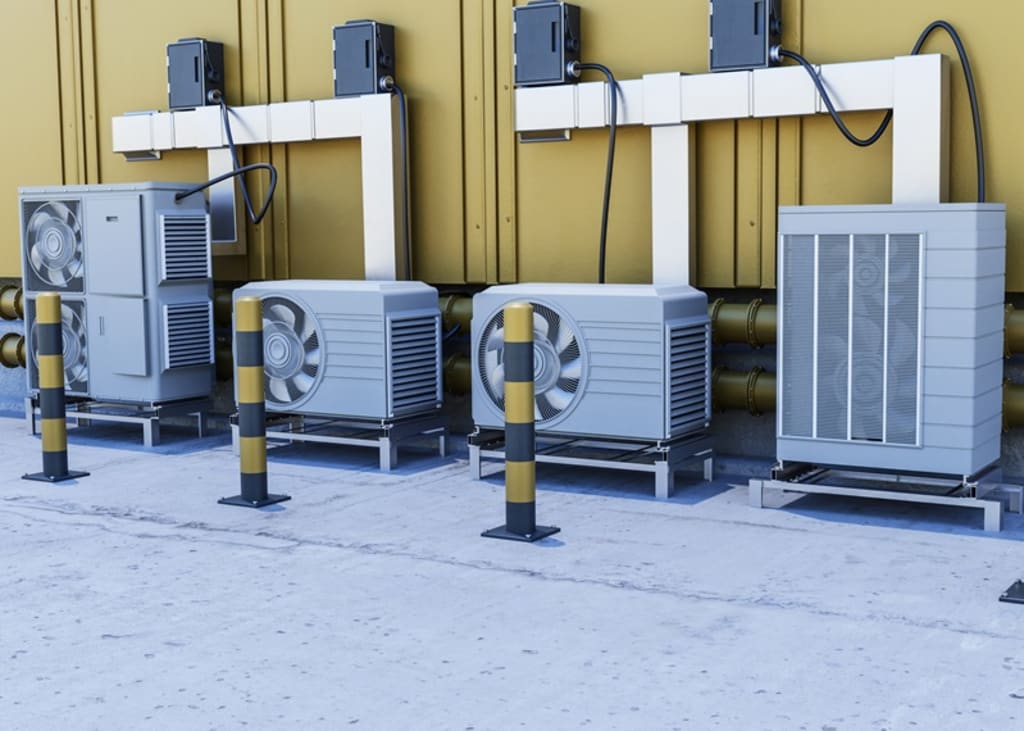Heat Pump Market in Asia Pacific is expected to expand at a rapid CAGR
Heat Pump Market Expected to Reach $201.5 Billion by 2032

According to a new report published by Allied Market Research, titled, “Heat Pump Market," The heat pump market size was valued at $71.2 billion in 2022, and is estimated to reach $201.5 billion by 2032, growing at a CAGR of 11.1% from 2023 to 2032.
A heat pump is a versatile and efficient device that transfers heat from one location to another using a refrigeration cycle. It operates by absorbing heat from a low-temperature source and releasing it at a higher temperature. Heat pumps are commonly used for both heating and cooling purposes in various domains, including residential, commercial, and industrial applications.
One of the most common applications of heat pumps is in residential heating and cooling systems. Heat pumps can extract heat from the outdoor air, ground, or water sources and transfer it indoors to provide warmth during colder months. Similarly, during hot weather, heat pumps can reverse the refrigeration cycle to remove heat from indoor spaces and release it outdoors, effectively cooling the building. This dual functionality makes heat pumps an energy-efficient alternative to traditional HVAC systems, particularly in moderate climates where the temperature differential is not extreme.
Heat pump water heaters use the same principles as air-source or ground-source heat pumps to extract heat from the surrounding environment and transfer it to the water storage tank. Compared to traditional electric water heaters, heat pump water heaters are significantly more energy-efficient and can reduce energy consumption by up to 50%, resulting in lower utility bills and reduced environmental impact in the heat pump market outlook.
Market Dynamics
The surge in demand for HVAC systems is expected to provide lucrative opportunity to the heat pump market forecast. Industries rely on heating, ventilation, and air conditioning (HVAC) systems for process cooling, heating, and ventilation to regulate temperature and humidity levels, support production processes, and protect equipment and materials. Industrialization involves the growth of industries, factories, and manufacturing facilities, which often require HVAC systems for maintaining optimal working conditions, preserving product quality, and ensuring employee comfort and safety.
As per the International Energy Agency (IEA) heat pump industry, meets about 10% of the world's building heating needs. The global inventory of heat pumps needs to increase by three-fold by 2030, covering at least 20% of the global heating demand to meet the goals of the Net Zero Emissions by 2050 (NZE) scenario. Governments worldwide are prioritizing the installation of energy-efficient heat pumps through subsidies, leading to a notable increase in consumer demand. These heat pumps improve efficiency and play a crucial role in reducing carbon emissions, thus expanding their market penetration.
In November 2023, Mitsubishi Electric Corporation announced its innovation in heat exchanger technology. The newly developed aluminium vertical flat tube (VFT) design promises to revolutionize the performance of heat-pump air conditioners, boosting efficiency by an impressive 40%. This advancement represents a significant leap forward from conventional aluminium horizontal flat tube (HFT) heat exchangers. Additionally, the VFT design offers the added benefit of reducing refrigerant charge requirements by up to 20%, attributed to its more compact internal volume compared to HFT models.
High space requirements restrain the growth of the heat pump market report. In densely populated urban areas, space is often limited, making it challenging to install larger heat pump systems. This limitation can deter homeowners and property developers from choosing heat pumps as their primary heating and cooling solution. Many residential properties, especially older homes, may not have adequate space for the installation of traditional heat pump systems. Retrofitting these properties with heat pumps could require significant modifications or compromises in living space.
Segments Overview
For the purpose of analysis, the heat pump market analysis covers segmentation on the basis of technology, capacity, end-use industry, and region. By technology, the market is divided into air to air, air to water, water soured, and others. By capacity, the market is classified into upto 10Kw, 10 to 30Kw, 20 to 30 Kw, more than 30Kw. Furthermore, the major end-use industry covered in the study include residential, commercial, and industrial. In addition, it outlines the details of the regions such as North America, Europe, Asia-Pacific, and LAMEA.
Region Analysis
Based on region Asia-Pacific is the most lucrative in the heat pump market growth. In Southeast Asian countries like Singapore and Malaysia, heat pumps are increasingly being recognized as efficient solutions for hot water production and space heating and cooling. The tropical climate in these regions presents opportunities for utilizing heat pumps for air conditioning, utilizing the relatively stable ground or water temperatures for efficient operation.
Australia and New Zealand are also witnessing a surge in heat pump installations, driven by the need to reduce energy consumption and greenhouse gas emissions in buildings. Both countries have implemented building codes and standards that promote the use of energy-efficient heating and cooling systems, including heat pumps.
The major players operating in the heat pump market share include DAIKIN INDUSTRIES, Ltd., Mitsubishi Electric Corporation, Carrier, Panasonic Corporation, Trane Technologies plc, Lennox International Inc., Bosch Thermotechnology Corp, NIBE GROUP, FUJITSU GENERAL., and SAMSUNG.
Key Findings of the Study
- By technology, the Water Soured segment is the fastest growing segment representing 11.6% of CAGR.
- By capacity, the upto 10Kw segment was the highest revenue contributor accounting for one third of the market share in 2022.
- By end-use industry, the residential segment was the highest revenue contributor accounting for more than half of the market share in 2022.
- By region, Asia-Pacific is the fastest growing region representing 11.4% of CAGR.






Comments
There are no comments for this story
Be the first to respond and start the conversation.